Beelitz-Heilstätten – Männerklinik (Verwaltungsgebäude)
Die zwischen 1898 und 1930 von der Landesversicherungsanstalt Berlin errichteten Arbeiter-Lungenheilstätten Beelitz-Heilstätten bilden einen der größten Krankenhauskomplexe im Berliner Umland. Es handelt sich hierbei um 60 Gebäude auf etwa 20 Hektar Fläche. Die Gesamtanlage war für ihre Zeit mustergültig und zeigt den medizinischem Aufwand mit dem gegen die Tuberkulose zum Ende des 19. Jahrhunderts vorgegangen wurde.
Die Bilder zeigen ein Verwaltungsgebäude, das zur Männerklinik gehört hat.
New Garden, Potsdam
The New Garden (“Neuer Garten”) is located southwest of Berlin and in northern Potsdam. Frederick William II of Prussia (1744-1797) arranged to have a new garden bordering on the lakes Heiliger See and Jungfernsee. The New Garden is one of the UNESCO World Heritage Site “Palaces and Parks of Potsdam and Berlin,” a status awarded in 1990.
The Gothic Library (“Gotische Bibliothek”) is arranged after the garden entrance directly to Mangerstraße und Behlertstraße. It was built between 1792 and 1794 from Frederick William II. The library sheltered german literature in the basement and french literature in the first floor. The inventory was moved to the city palace and was burned during the 2. World War.
The Marble Palace (“Marmorpalais”) was reserved for the private use of the king, who had an artistic temperament. After only a few years of use the palace was considered to be too small, and in 1797 construction started on two side wings. In November 1797 the king died and just the shell of the extensions had been completed. His son and successor, Friedrich Wilhelm III, being uninterested in the project and only finished off the exterior. Kaiser Wilhelm I. and his spouse moved into the Marmorpalais while they awaited the completion of their new residence at Babelsberg Palace (1833-1835-1849). His brother, Frederick William IV of Prussia, completed the unfinished interior structure and fittings for the two side extensions between 1843 and 1848. Therefore, frescos with scenes from the Niebelung saga (“Niebelungen Saga”) were added to the outside and decorated the colonnade walls. The last royal inhabitants of the Marble Palace were William, German Crown Prince, eldest son of Kaiser Wilhelm II, and his spouse Cecilie, who lived there between 1904 and 1917, when they moved to nearby Cecilienhof Palace. The Palace was seriously damaged when the north wing was hit by an incendiary bomb and the main building by a grenade at the end of World War II. Further damage occurred when the Red Army maintained an officers’ mess in the palace after 1946. Since April 14, 2006 all 40 rooms have been renovated and opened to the public. The repair of the exterior surface was completed in fall 2009 after several years of restoration work.
The Egyptian entrance to the orangery (1791/93) is topped by a sphinx sculpture and two black statues of Egyptian gods decorate wall recesses in the semicircular entrance area.
Potsdam – Glienicke Bridge (Glienicker Brücke)
The Glienicker Bridge is situated on the edge of Berlin. It spans the river “Havel” to connect the cities of Potsdam and Berlin. During the Cold War, the Glienicker Bridge was one of the few places in the world where the Soviet Union and the Western powers stood directly opposite each other. The bridge lies at an isolated point where US-occupied West-Berlin met the Soviet-occupied Potsdam (East Germany).
The Glienicke Palace (Schloss Glienicke) was designed by Karl Friedrich Schinkel for Prince Carl of Prussia in 1826. The two golden lions in the front of the building are versions of the Medici lions from the Villa Medici. The palace and park are UNESCO World Heritage sites as part of the Palaces and Parks of Potsdam and Berlin since 1990.
Potsdam – New Palace (Neues Palais)
The New Palace is situated on the western side of the Sanssouci royal park in Potsdam was build by Frederick the Great. The construction of the palace started 1763 and was finished after six years, 1769. It is considered to be the last great Prussian baroque palace.
Potsdam – Orangery Palace
The Orangery Palace (Orangerieschloss) is also known as the New Orangery on the Klausberg, or just the Orangery. It was built in the style of the Italian Renaissance, after the image of the Villa Medici in Rome and the Uffizi in Florence.
Potsdam – Park Sanssouci
Sanssouci Park is a large park surrounding Sanssouci Palace in Potsdam, Germany. Following the terracing of the vineyard and the completion of the palace, the surrounding is a baroque flower garden with lawns, flower beds, hedges and trees. The greenhouses of the numerous nurseries contained oranges, melons, peaches and bananas.
The park has a 2.5 km long straight main avenue and begins in the east at the 1748 obelisk and over the years was extended all the way to the New Palace, which marks its end in the west.
Potsdam – Church of Peace (Friedenskirche)
The Friedenskirch (Church of Peace) is a protestant church and is situated in the palace grounds of Sanssouci Park in Potsdam, Germany. The cornerstone of the churchhouse was laid on April 14, 1845 and the structure resembles a High Italian monastery. A narthex across the western side of the portal opens into an inner courtyard (atrium), in the middle of the courtyard the larger-than-life statue of Christ on the fountain is a copy of the marble original and an arcade surrounds the inner courtyard. Parallel to the southern arcade runs the cloister with the Heilsbronn Porch, an entrance to the Marly Gardens. The Heilsbronn Porch is a replica of a Roman tiered porch at the former refectory in the Heilsbronn Cloister in Middle Franconia.
